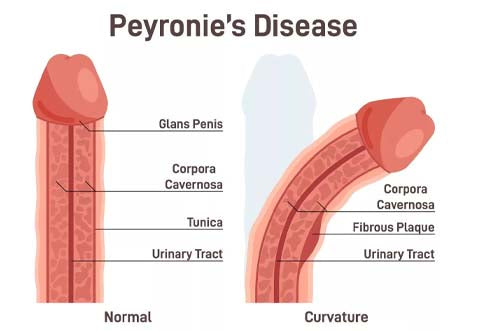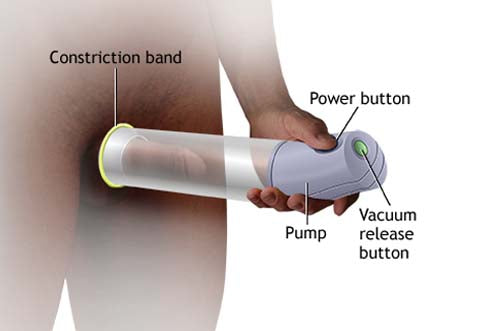Peyronie's (pay-roe-NEEZ) disease is a condition in which fibrous scar tissue forms in the deeper tissues under the skin of the penis. This causes curved, painful erections. It also can make the penis shorter while erect. Peyronie's disease is not caused by cancer.
Penises vary in shape and size. So having a curved erection isn't always a cause for concern. But Peyronie's disease causes a serious bend or pain in some people. This can prevent you from having sex. Or it might make it hard to get or keep an erection, which also is called erectile dysfunction. For many people, Peyronie's disease also causes stress and anxiety.
Peyronie's disease rarely goes away on its own. In most people with the condition, it will remain as is or may get slightly worse early on. Early treatment soon after you get the condition may keep it from getting worse or even improve symptoms. Even if you've had Peyronie's disease for some time, treatment may help ease symptoms such as pain, curving and shortening.
Products & Services
Symptoms
Peyronie's disease symptoms might start suddenly or appear over time. The most common symptoms include:
Peyronie's disease symptoms might start suddenly or appear over time. The most common symptoms include:
- Scar tissue. The scar tissue linked with Peyronie's disease also is called plaque. It's different from plaque that can build up in blood vessels or on your teeth. It can be felt under the skin of the penis as flat lumps or a band of hard tissue. The area over the scar tissue may feel tender.
- A bend to the penis. The penis might curve upward or downward or bend to one side.
- Erection problems. Peyronie's disease might cause problems getting or keeping an erection. This also is called erectile dysfunction. Often though, people with Peyronie's disease say they notice erectile dysfunction before the start of their other penile symptoms.
- Shortening of the penis. The penis might become shorter during erections due to Peyronie's disease.
- Pain in the penis. This symptom might happen with or without an erection.
- Other changes in how the penis looks. In some people with Peyronie's disease, the erect penis might look narrow or indented. It might even take on an hourglass-like shape, with a tight, narrow band around the shaft.
The curving and penile shortening linked with Peyronie's disease might become worse over time. Physical changes in the penis often get worse or stay the same during the first year to year and a half.
Pain during erections usually gets better within 1 to 2 years. The scar tissue, penile shortening and curving often remain. It's not common, but the curving and pain of Peyronie's disease can get better without treatment.
When to see a doctor
See a health care professional if you notice symptoms of Peyronie's disease. Early treatment gives you the best chance to improve the condition or keep it from getting worse. If you've had the condition for some time, get a health care checkup if the pain, curving, length, or other changes bother you or your partner.



